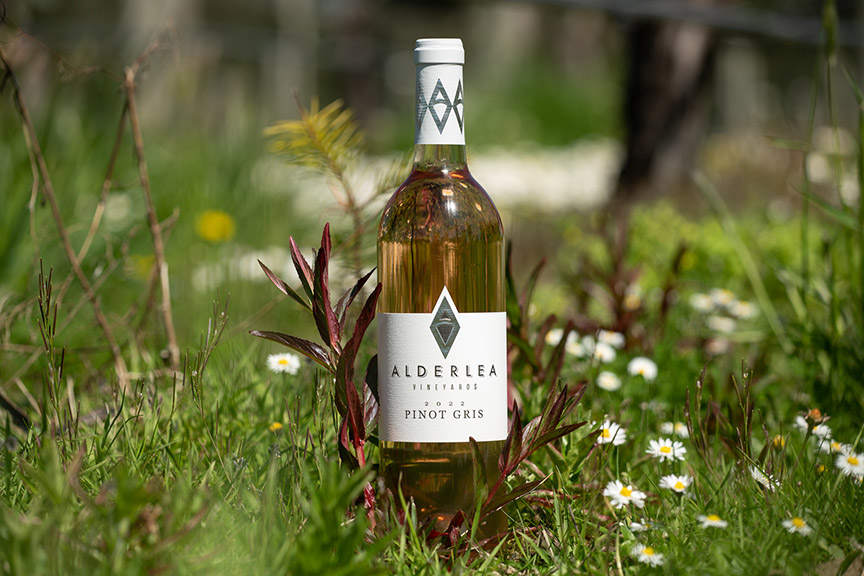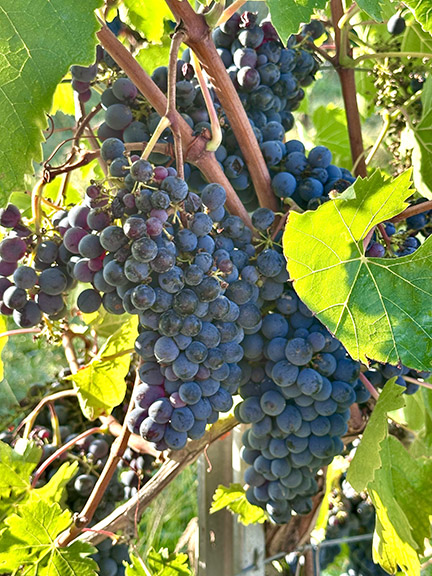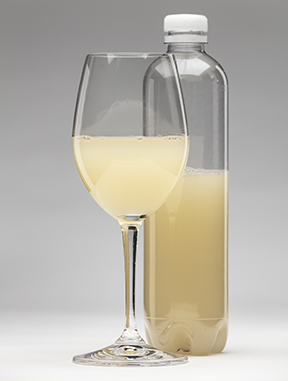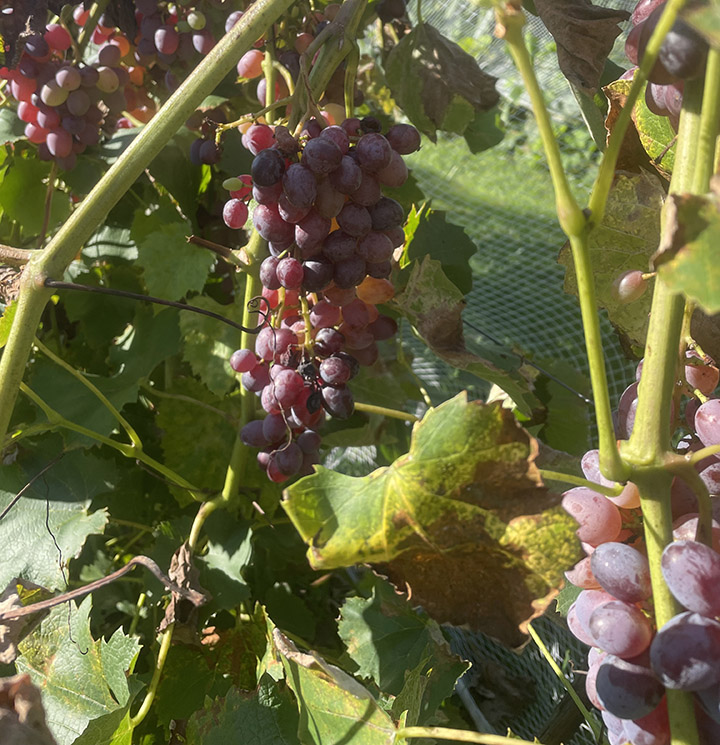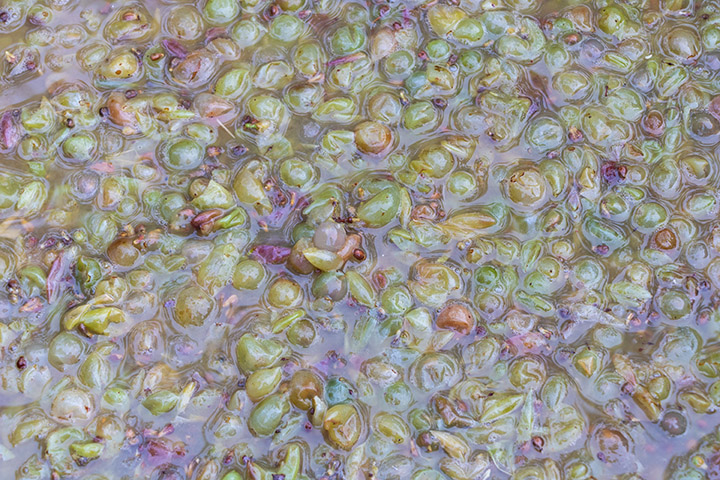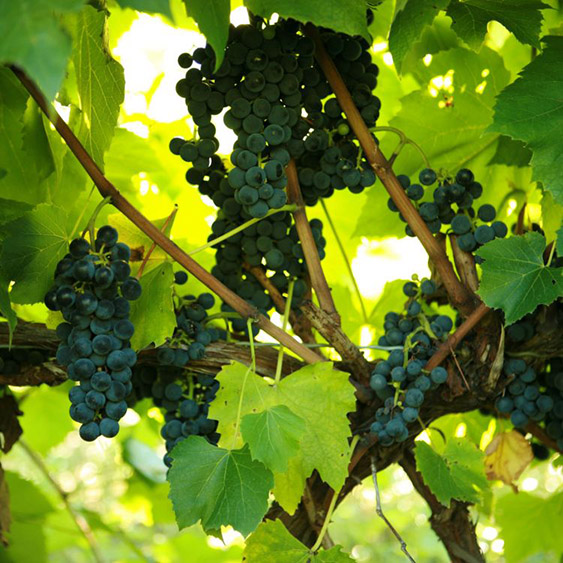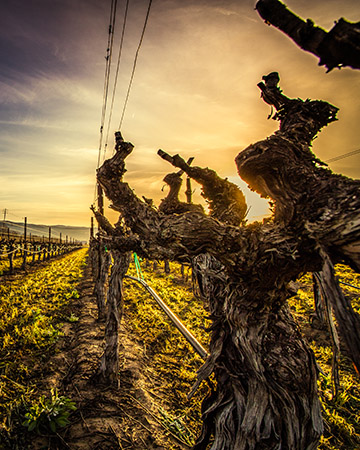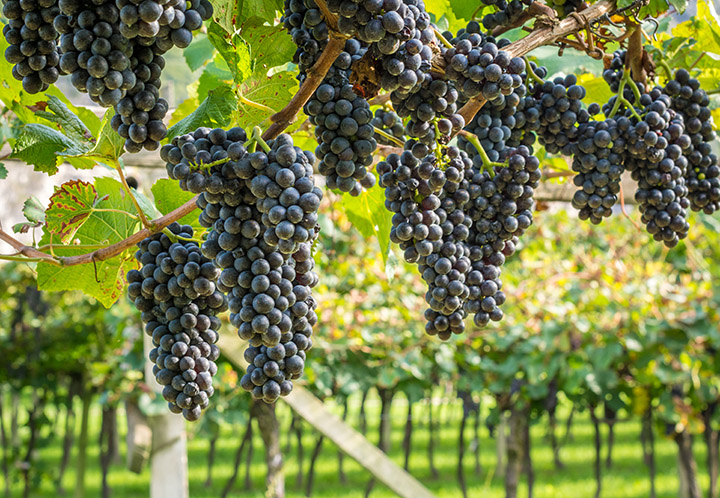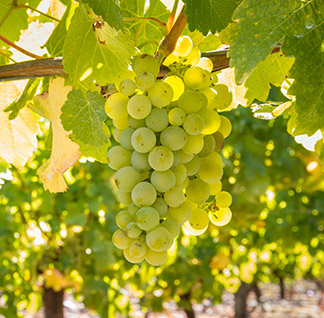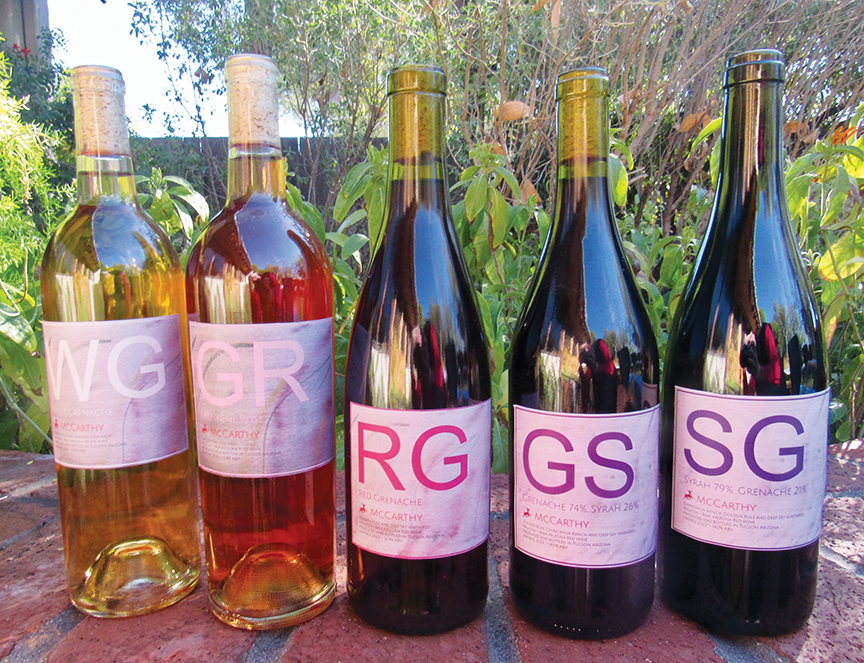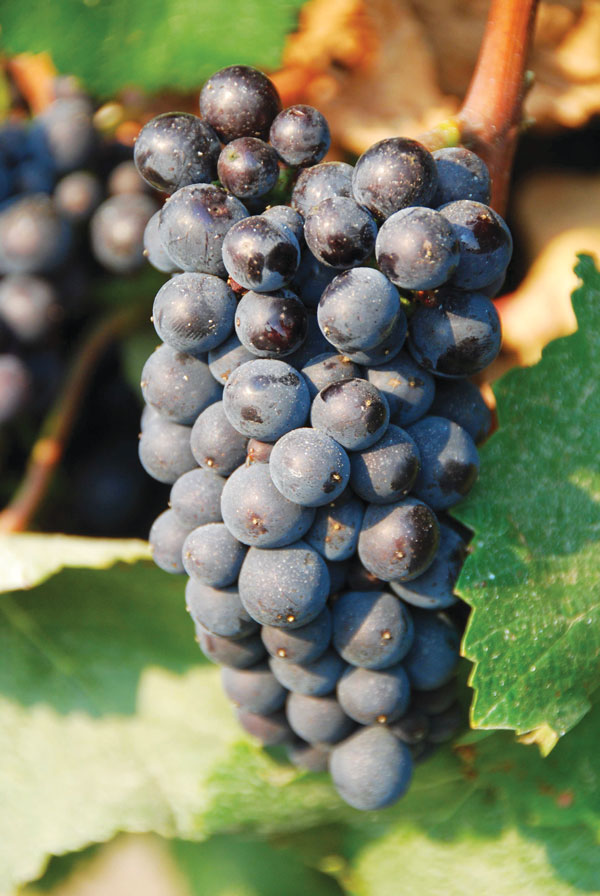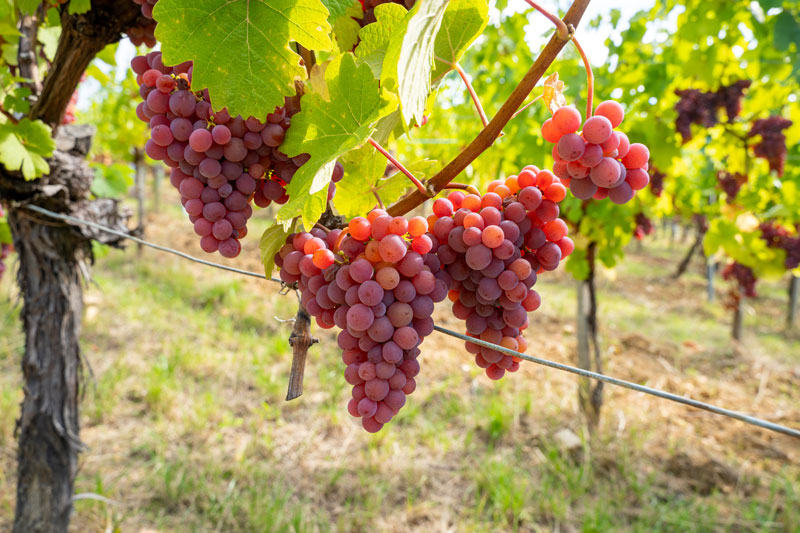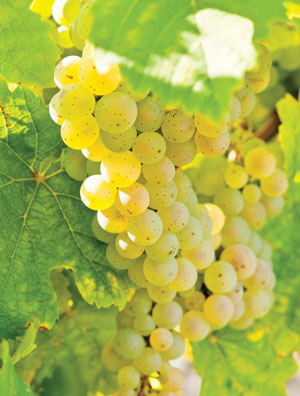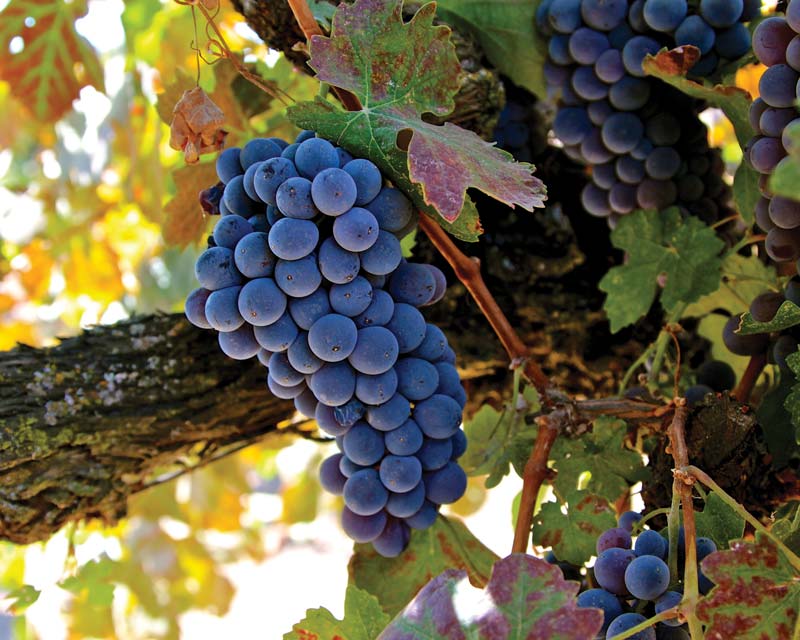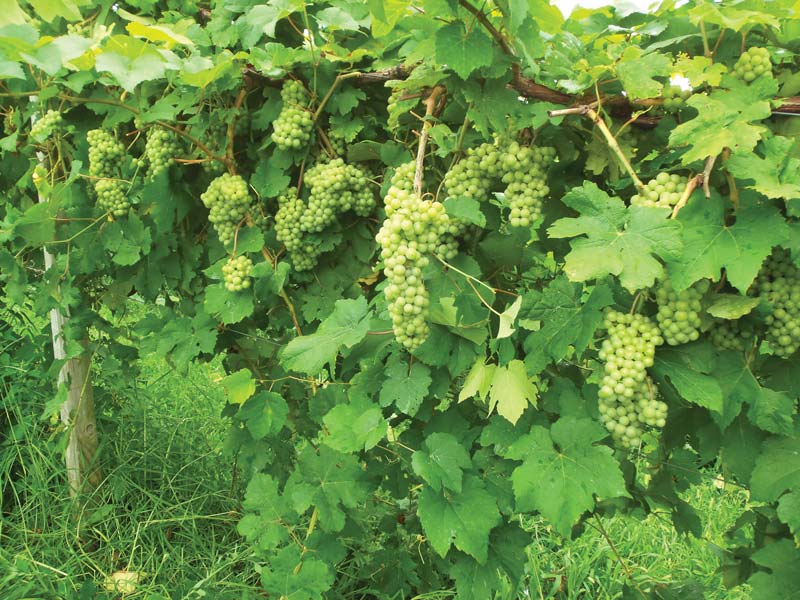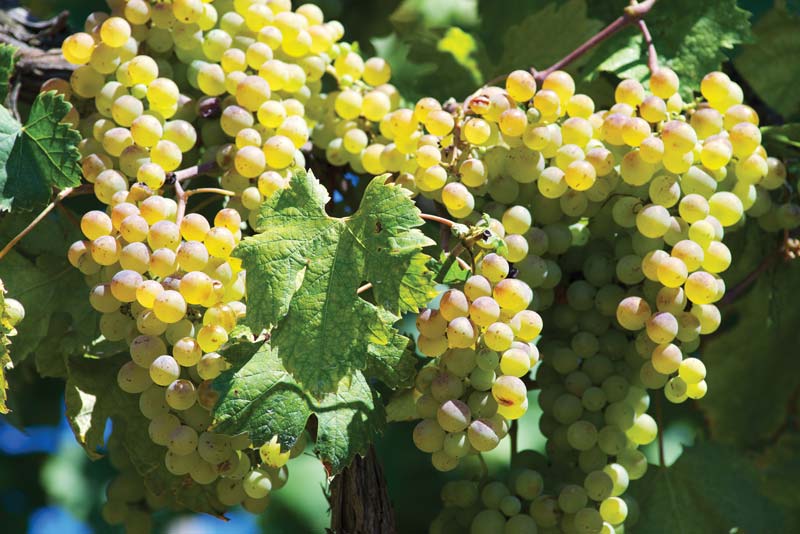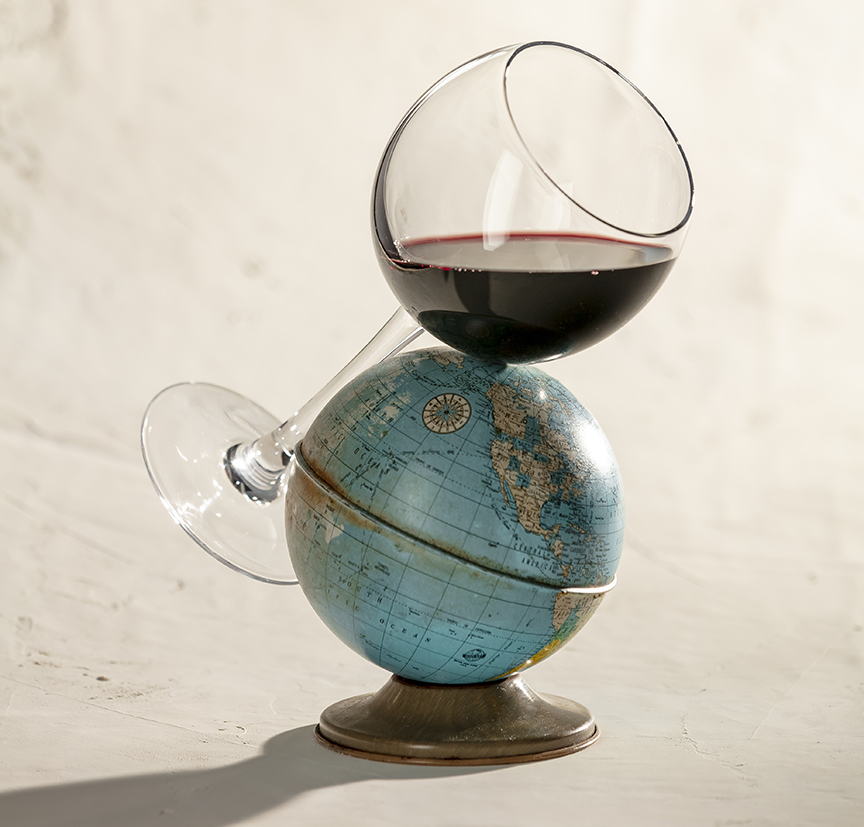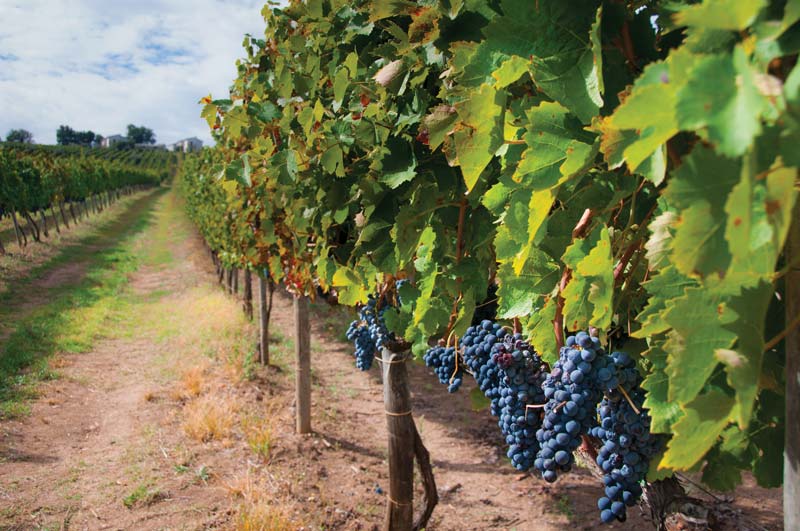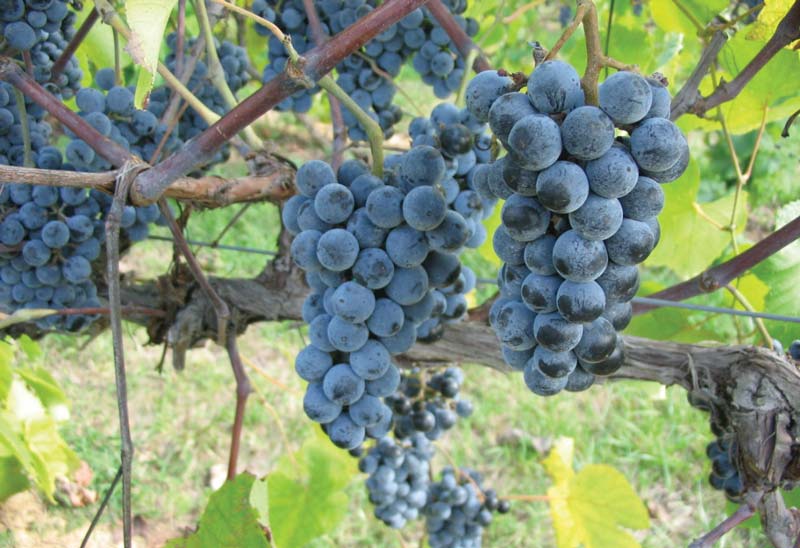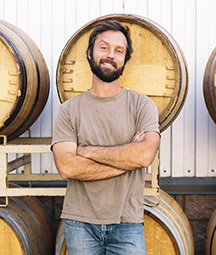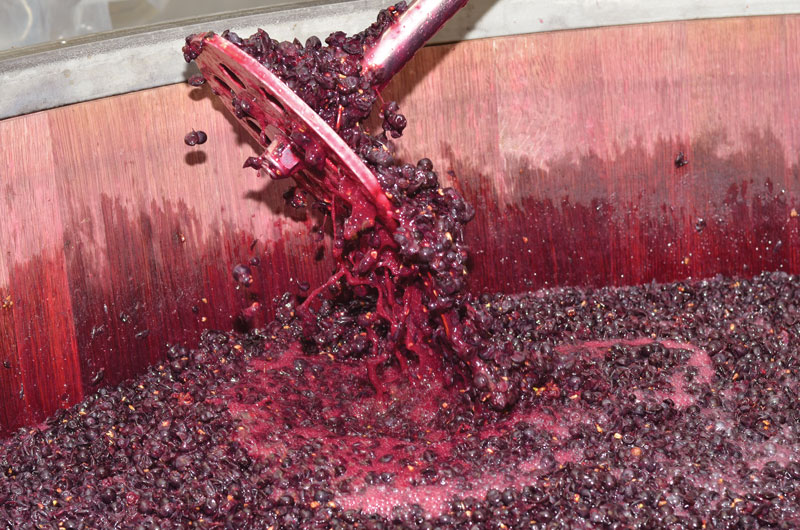Topic: Varietals-and-Wine-Styles
Ramato Pinot Gris
“Ramato” Pinot Gris gets its name from the copper color of the wine that comes from extended skin contact with rose-gray colored grapes prior to fermentation. This style of wine was made popular in northeastern Italy more than a century ago due to the more intense aromatics, flavors, and body that comes from the method. The same process can be used at home to add more character to this often nondescript grape variety.
Sangiovese
Sangiovese is the ultimate wine to pair with food due to the variety’s ability to hold its acidity as it ripens and generous amounts of ripe red fruit flavor. Learn more about this Italian variety that is planted worldwide.
Federweißer
Popular in parts of central Europe where it’s often sold from carts on the side of the road during a short period each fall, federweißer is a partially fermented, low-alcohol wine that is intended to be consumed before fermentation is complete.
Jupiter: A table grape with BIG winemaking potential
Jupiter — a grape that gets its name from the girth of its berries — is often grown for eating, but the purple-skinned grape can also be turned into a lovely white or rosé wine.
Skin-Contact White Wines
Orange wine is made by treating white grapes in a similar manner to red wine production, with fermentation conducted on the skins. Even if orange wine isn’t the goal, allowing some skin contact with your white wines can enhance their aromatics.
Petite Sirah: The little grape with big color
With small berries and a high grape skin-to-juice ratio, Petite Sirah makes a wine that is incredibly pigmented, rich in black fruit character, and with elegant and lasting tannins that make a great impression upon the drinker’s palate.
St. Croix
St. Croix is a red hybrid grape designed by a private grape breeder to withstand the bitter cold Wisconsin winters. Learn more about this thin-skinned red variety that thrives where others can’t survive.
Kings of Zin
Lodi, California, is known for its production of Zinfandel wines that run the spectrum of wine styles. Three Lodi winemakers share their approaches to crafting wines from the quintessential American grape.
Traminette
Traminette is a white hybrid grape grown all over the northern areas of North America that can make extremely aromatic wines. From crisp, dry examples to late-harvest and even fortified wines, the grape is a fun one for home winemakers to play with.
Teroldego
If you want to make a red wine that can be consumed without years of aging, Teroldego is a great option. This Italian variety features flavors of bold acidic fruits and rich notes of baking spices. It doesn’t require heavy oaking and its silkier tannins negate the need to wait for the sometimes harsh flavors of young red wines to mellow.
Sauvignon Blanc
Sauvignon Blanc is one of the most popular white wines worldwide. Where it’s grown has a big influence on the resulting wine, but the winemaker also has a say in the final outcome based on the techniques used in the winery.
Sagrantino
Most readers are likely familiar with Amarone wines made from drying grapes to concentrate the flavors and sugars prior to fermentation, but have you heard of Sagrantino? This Italian variety known for its huge tannins makes similar passito wines, in addition to table wines worth cellaring.
Grenache Five Ways
A home winemaker sets out to explore just how versatile Grenache can be by making five different wines from it in a single vintage, including red, pink, and white versions.
Paths to Pinot Noir
It’s a legendary grape with a storied history and one of the most revered in the wine world. But it is also a cantankerous grape to grow and make wine with. Chik Brenneman shares some best practices for handling Pinot Noir in the winery.
Groovy Gewürztraminer
While it may not look like a white wine grape, Gewürztraminer is well known to produce world-class white wines. Learn some best practices to work with this grape varietal that can thrive when grown in cooler climates.
Making Riesling Wines: Tips From the Pros
Get some pointers on working with the stylistically diverse Riesling grape, a cool-climate loving noble variety.
Graciano
A grape variety that has recently garnered a following thanks to its tannic structure and ability to retain acidity in warm climates, Graciano was traditionally a blending grape. But when made into a varietal wine, it can show impressive complexity as well.
Dry Rosé Production
Dry, crisp rosé wines hold a special place in a lot of wine lovers’ hearts, as a well-made version can be a thing of beauty. Learn some of the key components to producing one yourself.
Cabernet Doré
A new flock of hybrid grape varieties in the market is turning heads, not only for their disease and cold tolerance in the vineyard, but also in the winery for the qualities that they can carry to the bottle. Meet Cabernet Doré.
Producing Balanced, Low-Alcohol Wines
Funny you mention this topic because I’m currently working on a lower-alcohol project at work (at Plata Wine Partners, I often develop custom projects for clients, and this is one). The brief
Vermentino
With its home along the shores of the Mediterranean Sea, this white grape is starting to find its way to the U.S. for good reason. Learn about the history, viticultural tips, and winemaking styles of Vermentino grapes.
Merlot Around the World
Though its reputation may have been tarnished by a certain movie after the turn of the century, Merlot continues to be one of the most popular wine grapes in the world. Winemakers from France, Italy, and the United States share advice on crafting a memorable Merlot at home.
Aglianico
Hailing from the southern regions of Italy, Aglianico is revered as producing big and bold red varietal wines. It is finding its way across the sea and will need some taming in order to make the best from its clusters. Get the scoop.
Notably Norton
A grape with a proud following regionally, Norton has roots that remain shrouded in a fog. Learn about its past, how to best tend to it in the vineyard, and bring out its bright qualities in the winery.
Red Bordeaux-Style Blends: Tips from the Pros
Three pros making high-end red Bordeaux-style blends share their advice on crafting these complex, elegant wines.
